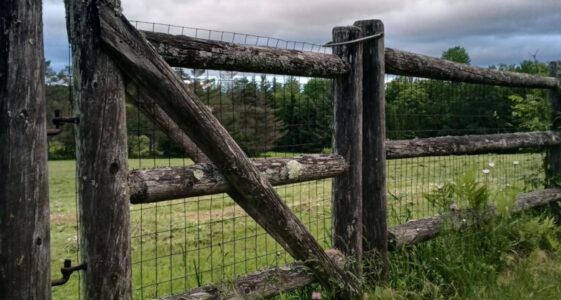Vegetation Management

Vegetation Management
Trees are the primary cause of power outages in JEC’s service area, and account for about 50% of all JEC outages annually. Trees can cause major extended outages for customers by breaking wires or poles. JEC’s mission includes providing reliable services to our customers, and with this focus JEC must have an effective vegetation management program. Sufficient clearances must be maintained between trees/vegetation alongside as well as underneath power lines, and other types of vegetation must also be cleared within our pole line right-of-way.
![461198279_10227297160075367_1259935639377136901_n[1] 461198279_10227297160075367_1259935639377136901_n[1]](https://www.jec.energy/wp-content/uploads/2024/10/461198279_10227297160075367_1259935639377136901_n1-1024x768-561x300.jpg)
Clearances are per electric utility industry standards and are intended to allow companies to perform their respective vegetation management programs on a 7-year cycle. Therefore, you can expect to see JEC vegetation management efforts going on in your area on such a schedule.
When line clearance work is complete, our crews leave all substantial wood for the landowner, as it is their property. Small branches and brush next to a roadway will be chipped and removed. The same material away from a roadway will be wind rowed to the edge of the right-of-way consistent with environmental stewardship, as well as good utility practices.
Thoughtful planting of new trees can help JEC minimize tree-related outages and contribute to the beauty of our landscape. Before planting trees on your property, the location of utility lines should be considered. Be aware of overhead and underground lines. Spreading tree branches as well as spreading tree roots are of concern. Never dig near underground utility lines. Trees should never be planted within 30 feet of power lines and spreading trees (such as maple) should be planted at least 50 feet away from power lines so they can fully mature before they need to be managed.
Two good sources for additional information are the International Society of Arboriculture, and the Tree Care Industry Association.
This Year's Tree Trimming
2026 Tree Trimming:
RFP for Tree Trimming 2026 – awarded to Havreluk Tree Service, Townshend, VT
• VT Route 100 (1705 VT Route 100 – 3077 VT Route 100)
• Parsons Road (intersection with Gates Pond Road – intersection with Stonehouse Road)
• Fowler Road North (VT Route 100 intersection – 896 Fowler Road)
• Gates Pond Road (VT Route 100 intersections – 922 Gates Pond Road)
• Bernard Road (entire length)
• Birdville Road (VT Route 100 intersection – 120 Birdville Road)
• Elwin Lane (entire length)
2025 Tree Trimming:
RFP for Tree Trimming 2025 – awarded to Alpha Arbors, Stamford, VT
• VT Route 100 (6966 VT Route 100 to 9976 VT Route 100)
• Sadawga Lake Road (entire length)
• Town Hill Road (entire length)
